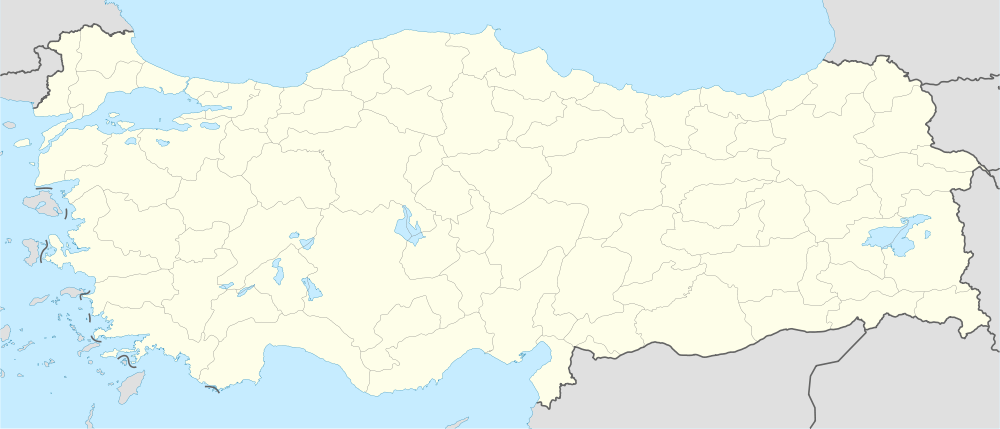Karaca Cave
| Karaca Cave | |
|---|---|
| Karaca Mağarası | |
 Location of Karaca Cave in Turkey | |
| Location | Torul, Gümüşhane, Turkey |
| Coordinates | 40°32′39″N 39°24′10″E / 40.54417°N 39.40278°ECoordinates: 40°32′39″N 39°24′10″E / 40.54417°N 39.40278°E |
| Length | 105 m (344 ft) |
| Height variation | 18 m (59 ft) |
Karaca Cave (Turkish: Karaca Mağarası) is a network of caves located near the town of Torul in Gümüşhane Province, Turkey.
Although the cave was known to the people living in that region, it became open to tourism as a result of the scientific research conducted by Sukru Eroz, a geological engineer from Cebeli Village, between the years 1983-1990.[1] Prof. Dr. Remzi Dilek and his team from the Department of Geological Engineering at the (Karadeniz Technical University) contributed a lot of research and scientific studies of the cave. As a result of these studies, it was opened to tourism in 1996 after the Ministry of Culture and Tourism was informed and the cave was officially registered.
Location of the cave
Karaca Cave is surrounded by the borders of the village Cebeli in Torul. It is 17 km (11 mi) far away from the city center at an elevation of 1,550 m (5,090 ft) high above sea level. The cave attracts the most tourists in Gumushane.
The cave can be reached by following the 4 km (2.5 mi) road, which branches off from the 12th km of the Gumushane-Trabzon highway D.885 ![]() . There are restaurants and other small stores located near the cave.
. There are restaurants and other small stores located near the cave.
Characteristics
In the area extending between Gümüşhane and Torul, super-crustacean formations have been extensively scattered out. These generally consist of andezitic and basatic lavas, lufs and agglomerates. Total thickness of this line reaches 1,000 m (3,300 ft). Partly intermissionary additives varying between 100 and 200 m (330 and 660 ft) in thickness and consisting of limestone, marn and gres draw attention. Karaca Cave developed in abundantly cracked massive limestone encircled by volcanits in this serial.
The cave of Karaca is rich in formation dripstones. These dripstones are in different shapes and colours. Inside the cave, there are dripstone stalactites, stalagmites, and travertines. There are also many cave roses located on some travertines and stalagmites.
The pools of dripstones are very large in the cave, especially the ones through the end of cave, which have up to 1 m (3.3 ft) depth.
The travertines' colours can range from white to dark blue, which proves a high density of iron and magnesium minerals in the water.
The cave lies on a horizontal slant, having four different halls connected to each other. Two of these halls are also divided in half by the wall dripstones (Thus, one can argue that the halls are six in number, not four).
The height of the cave entrance is about 1.8 m (5.9 ft), the height of an average man; but through the inside the height increases regularly and the shape of cave becomes like a funnel. The distance between the entrance and the end is roughly 105 m (344 ft) in length. The average height is 18 m (59 ft). The total area is 1,500 m2 (16,000 sq ft).
There is no stream in the cave of Karaca, but water leaking through the cave ceiling still provides water for the formation of dripstones. Other than those, there are some travertine pools and ponds inside the cave. The ponds, which are at the entrance of the third and fourth halls, have a high water content.
There is no significant air circulation in the cave; therefore, the humidity rate in its atmosphere increases from around 65% at the entrance to up to 75% in the cave's interior. The air inside the cave is cooler than outside the cave in summertime and warmer in winter. Because of this, it is considered to be a micro air conditioned area.
The Karaca Cave has been open to visitors since 1996.
References
External links
There are nice pictures of the cave in this link:
| ||||||||||||||||||||||||||